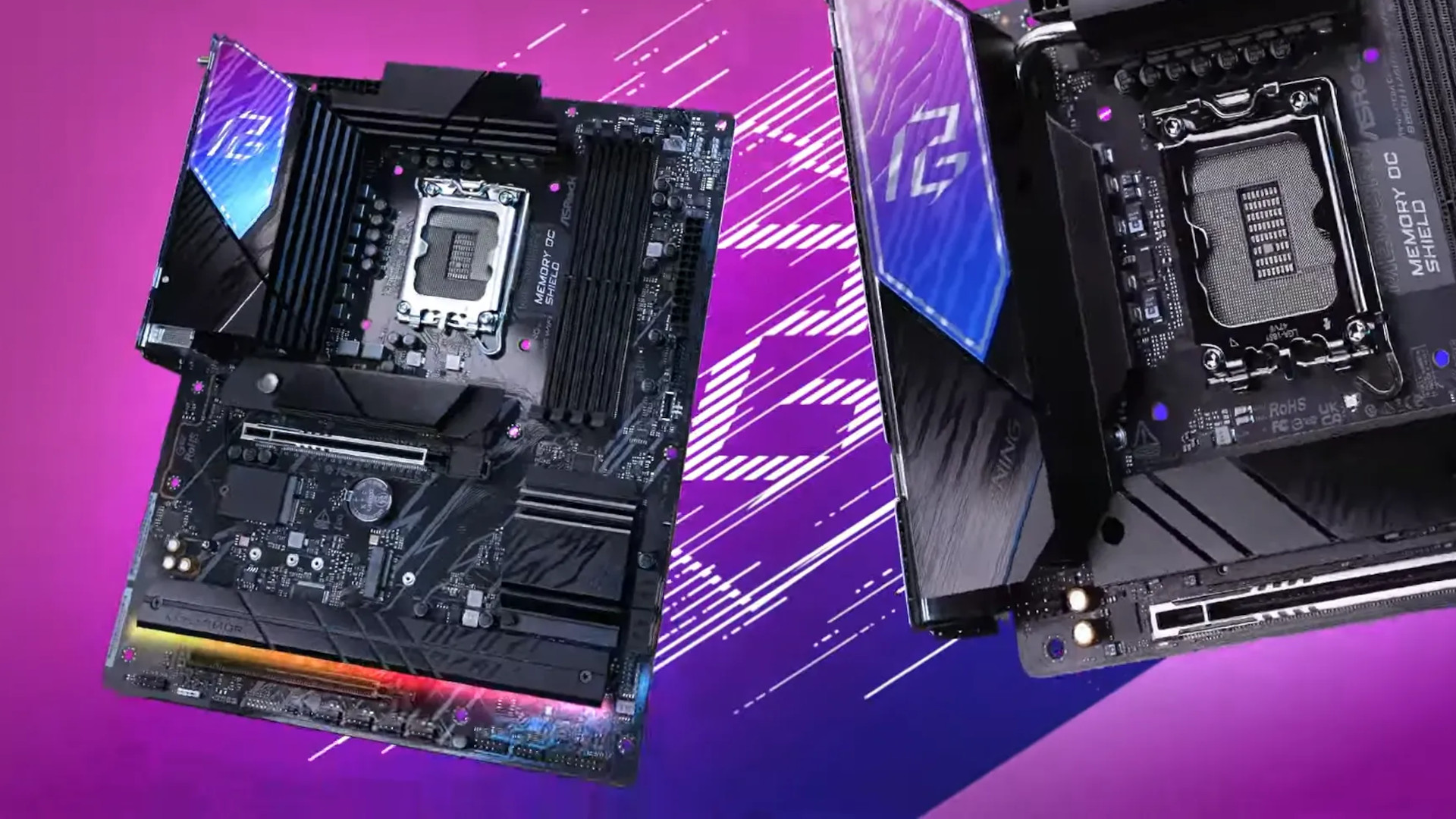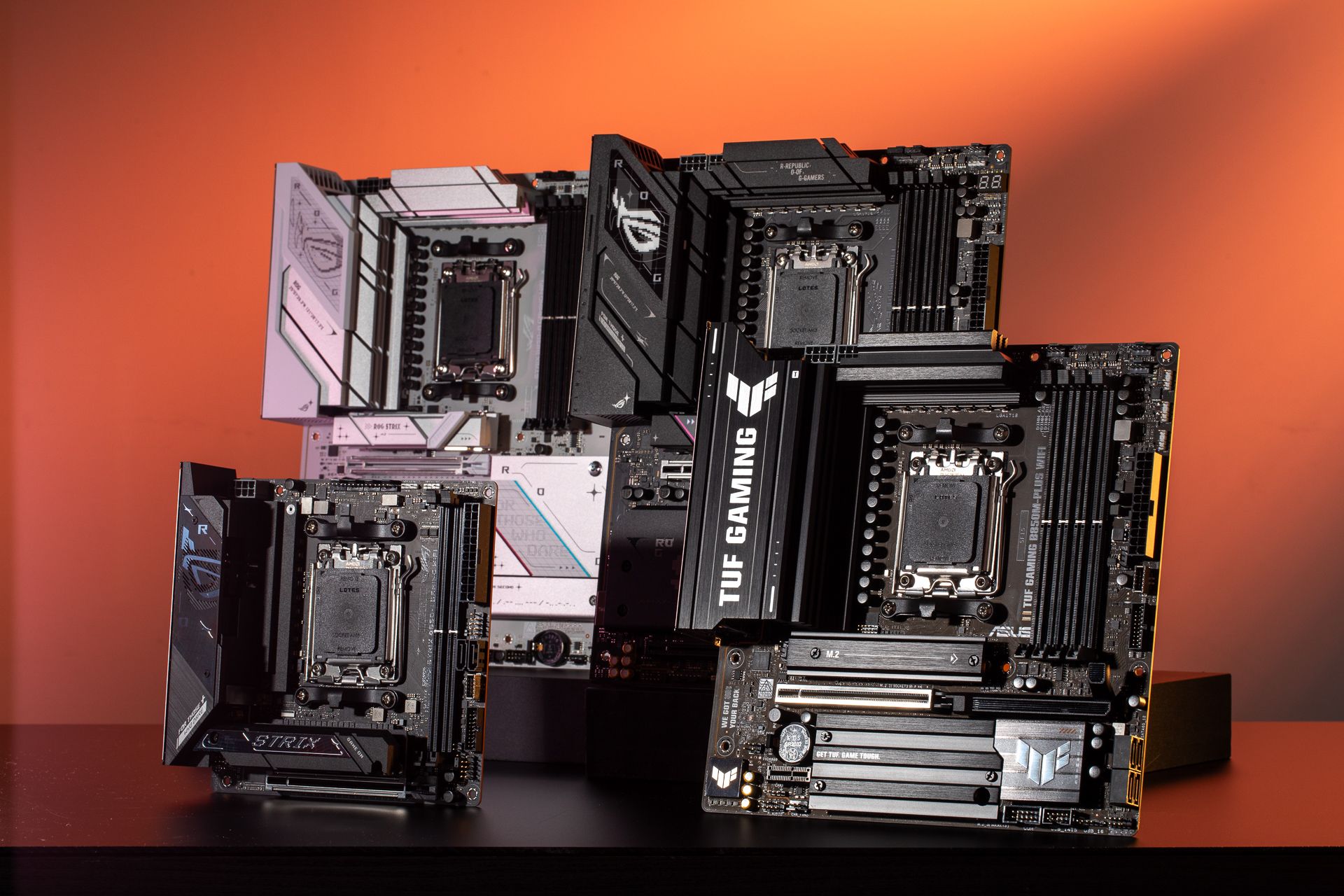AMD and Intel launch mainstream and budget motherboard chipsets at CES but some of the codenames are so similar that I've already mistaken them for each other
And not just once, either.

It's taken a while to happen, especially in the case of AMD, but at long last, we're seeing new mainstream and budget motherboards for Zen 5 and Arrow Lake processors at CES. The stars of the show sport the B850 and B860 chipsets, but given that the names are almost identical, there's probably going to be no end of confusion resulting in products being returned to retailers. That's because B850 is AMD-only and B860 is Intel-only. Obviously.
In the case of the former, AMD actually announced the B850 chipset back in July 2024, with the launch of the Zen 5 CPU architecture, but it's taken until now for motherboards using it to appear. ASRock, Asus, Gigabyte, and MSI are all showing off new models at CES, and I have one in for testing already.
While AMD X870/E motherboards all come with PCIe 5.0 graphics card and primary SSD slots, B850 boards are only required to support PCIe 4.0 for both as standard, though many offer Gen5. It's a similar story regarding USB4—mandatory for X870/E boards, optional for B850.
In some cases, it can be quite confusing. Take Asus, for example, and its ROG Strix B580 motherboards. The B850-E Gaming WiFi has a Gen5 GPU and SSD slot (the rest being Gen4) and a 40 Gbps USB4 port; the B850-F Gaming WiFi has the same Gen5 slots but no USB4 port, just a 'normal' 20 Gbps USB.
And there's the B850-A Gaming WiFi with a Gen5 graphics card slot, but no Gen5 SSD slot or USB4 port. Ah but then there's the B850-I Gaming WiFi that has a Gen5 GPU slot, two Gen5 SSD slots, and no USB4.
To be fair to Asus, it's not the only motherboard vendor that has a large number of very similar but confusingly specified models. But what's making it all worse is the fact that Intel's new mainstream chipset for its Core Ultra 200S processors is called B860.
The similarity between the codenames means that there are certainly going to be cases where someone accidentally orders the wrong motherboard—the best-case scenario just results in a quick return to the retailer, and the worst-case scenario involves someone trying to jam an AMD CPU into an Intel socket or vice versa.
Keep up to date with the most important stories and the best deals, as picked by the PC Gamer team.
Comparing the two chipsets shows that they are very similar in features, as well as names. Neither offer PCIe 5.0 lanes (just Gen4), nor sport USB4 ports (that's done via a separate chip in the case of B850 motherboards).
Intel's B860 has two more PCIe lanes than AMD's B850 but the latter has integrated WiFi 7, whereas the former uses WiFi 6E (though some B860 boards use a separate WiFi 7 chip).

Down at the bottom end of the chipset scale, you've got AMD's B840 and Intel's H810. The latter is better than the former but unless you're really working with a very tight budget, neither are great options for building a cheap gaming PC. You're better off with last-gen products that can be bought for a much lower price than at launch.
As these new motherboards have only just been launched, there aren't many in stores just yet so you might want to wait a month or two just to what the reviews of them are like. I suspect some of them are going to be quite expensive, though, so you may well be better off getting an X870 or Z890 board if you get more features for the same money. We'll let you know once we have more info.
Catch up with CES 2025: We're on the ground in sunny Las Vegas covering all the latest announcements from some of the biggest names in tech, including Nvidia, AMD, Intel, Asus, Razer, MSI and more.

Nick, gaming, and computers all first met in the early 1980s. After leaving university, he became a physics and IT teacher and started writing about tech in the late 1990s. That resulted in him working with MadOnion to write the help files for 3DMark and PCMark. After a short stint working at Beyond3D.com, Nick joined Futuremark (MadOnion rebranded) full-time, as editor-in-chief for its PC gaming section, YouGamers. After the site shutdown, he became an engineering and computing lecturer for many years, but missed the writing bug. Cue four years at TechSpot.com covering everything and anything to do with tech and PCs. He freely admits to being far too obsessed with GPUs and open-world grindy RPGs, but who isn't these days?


